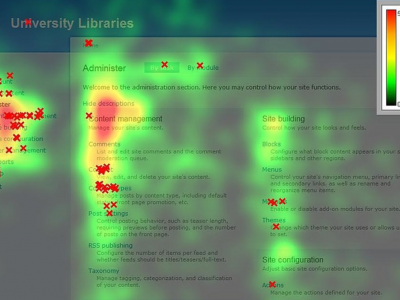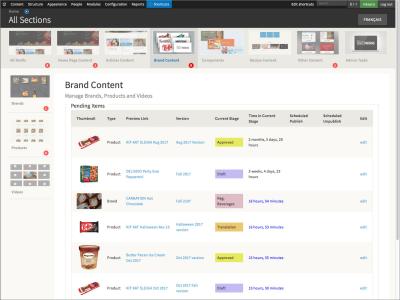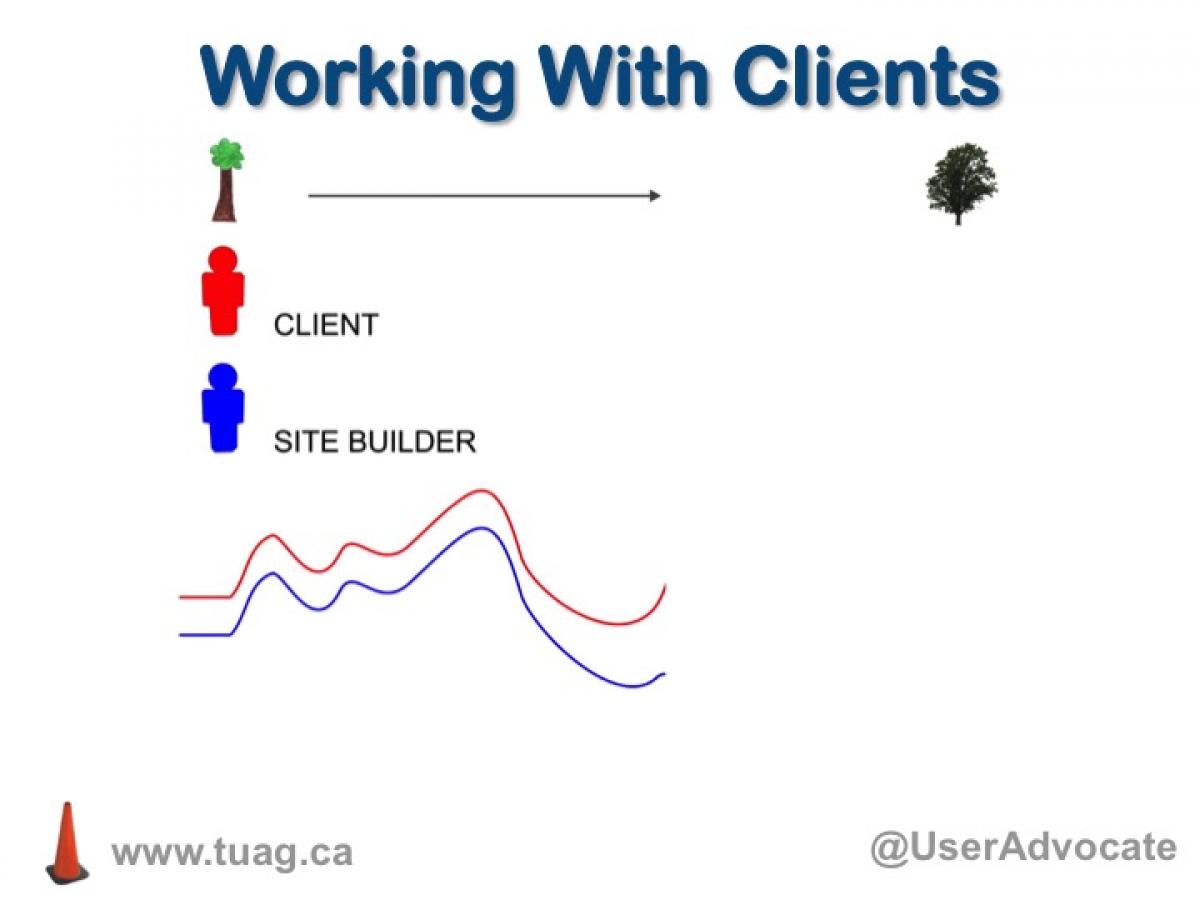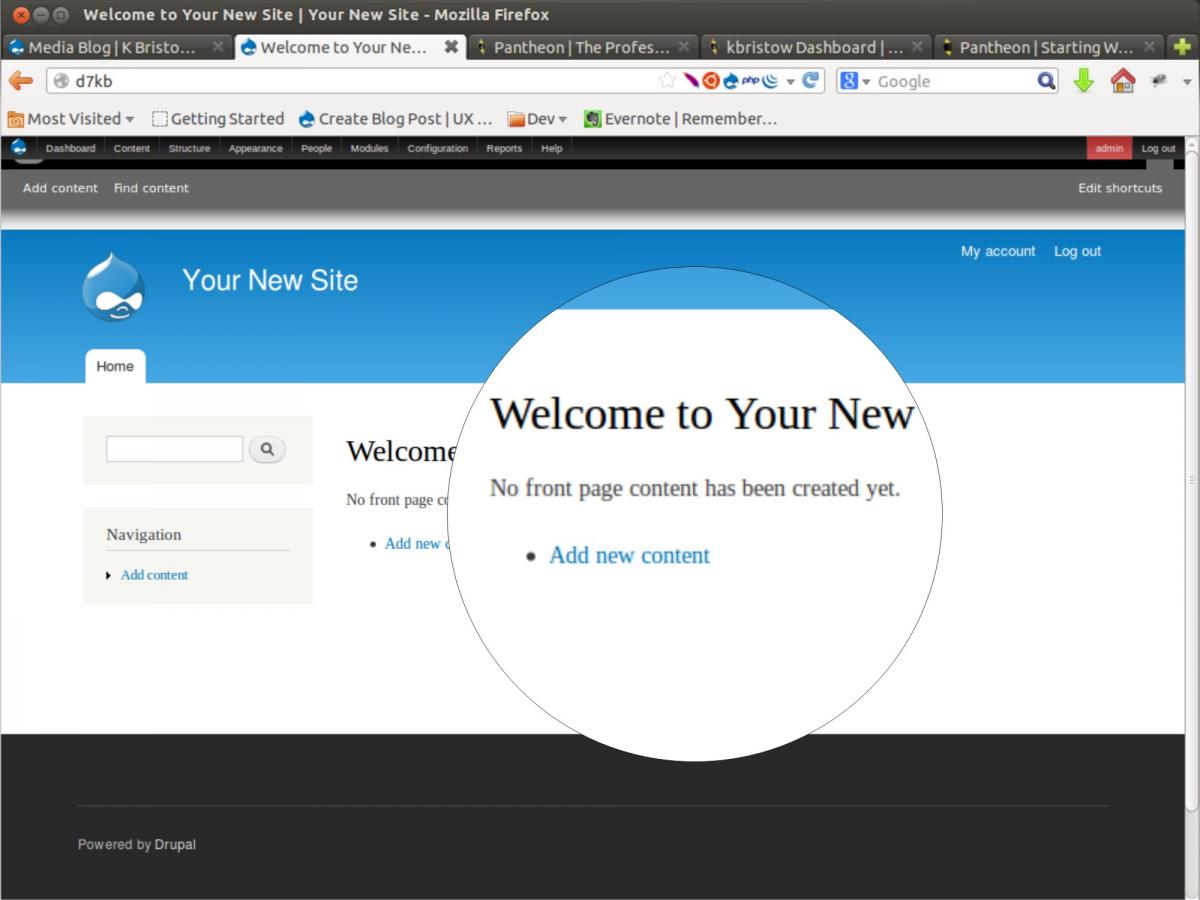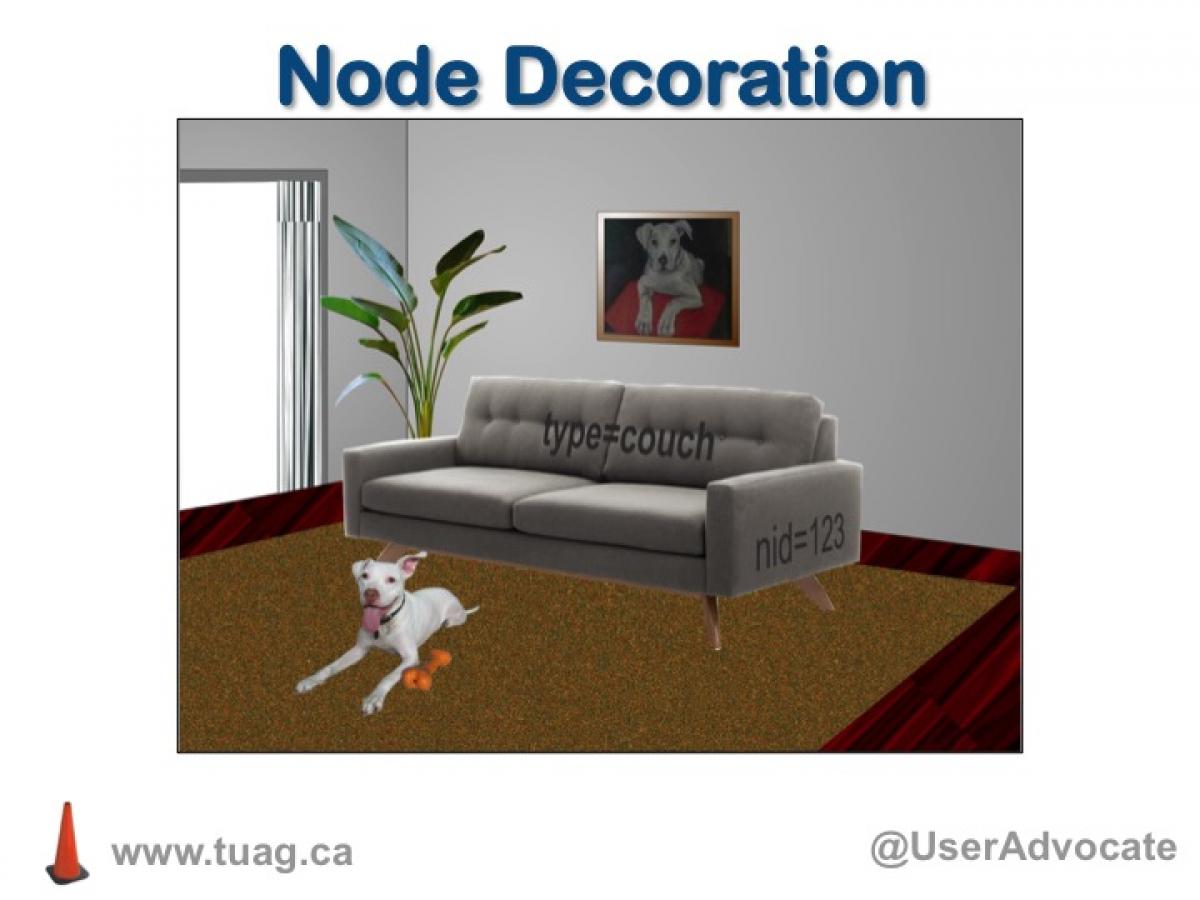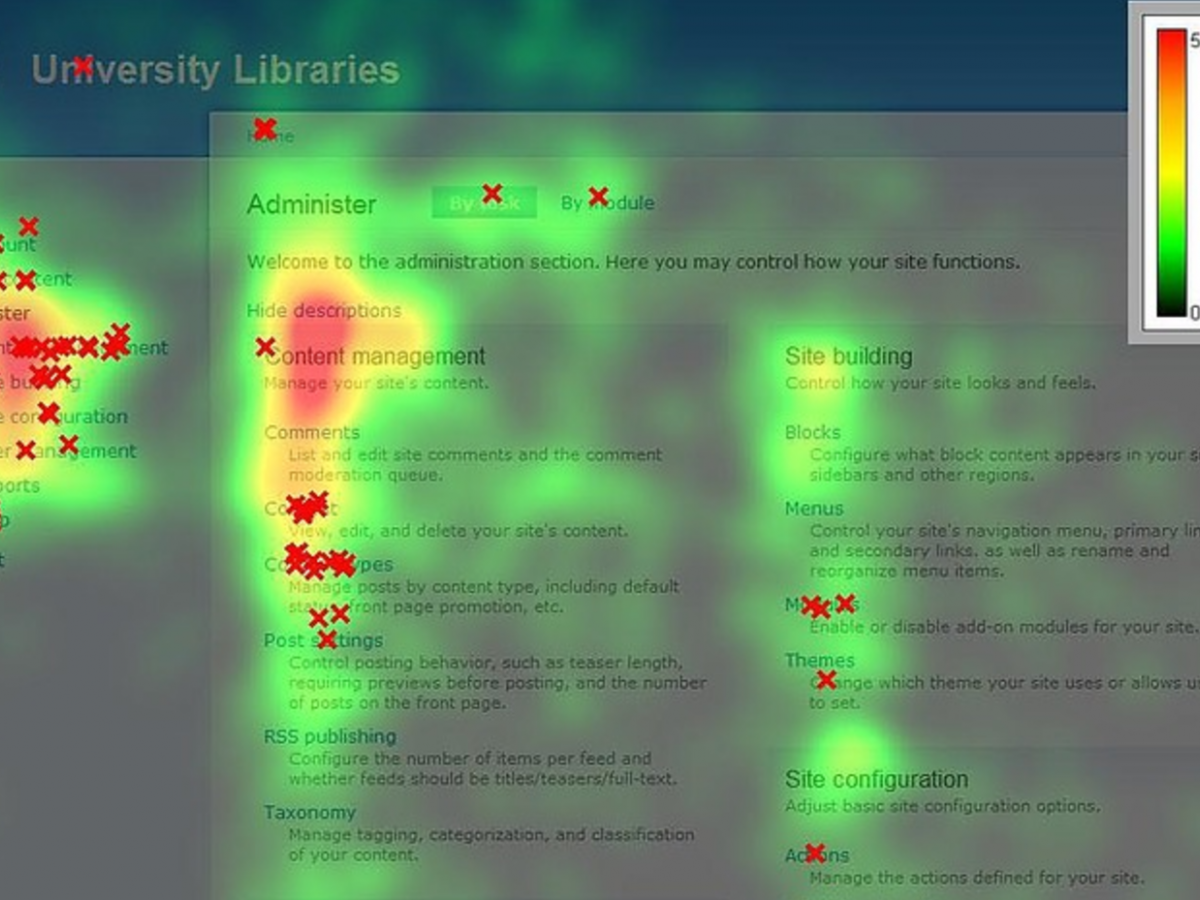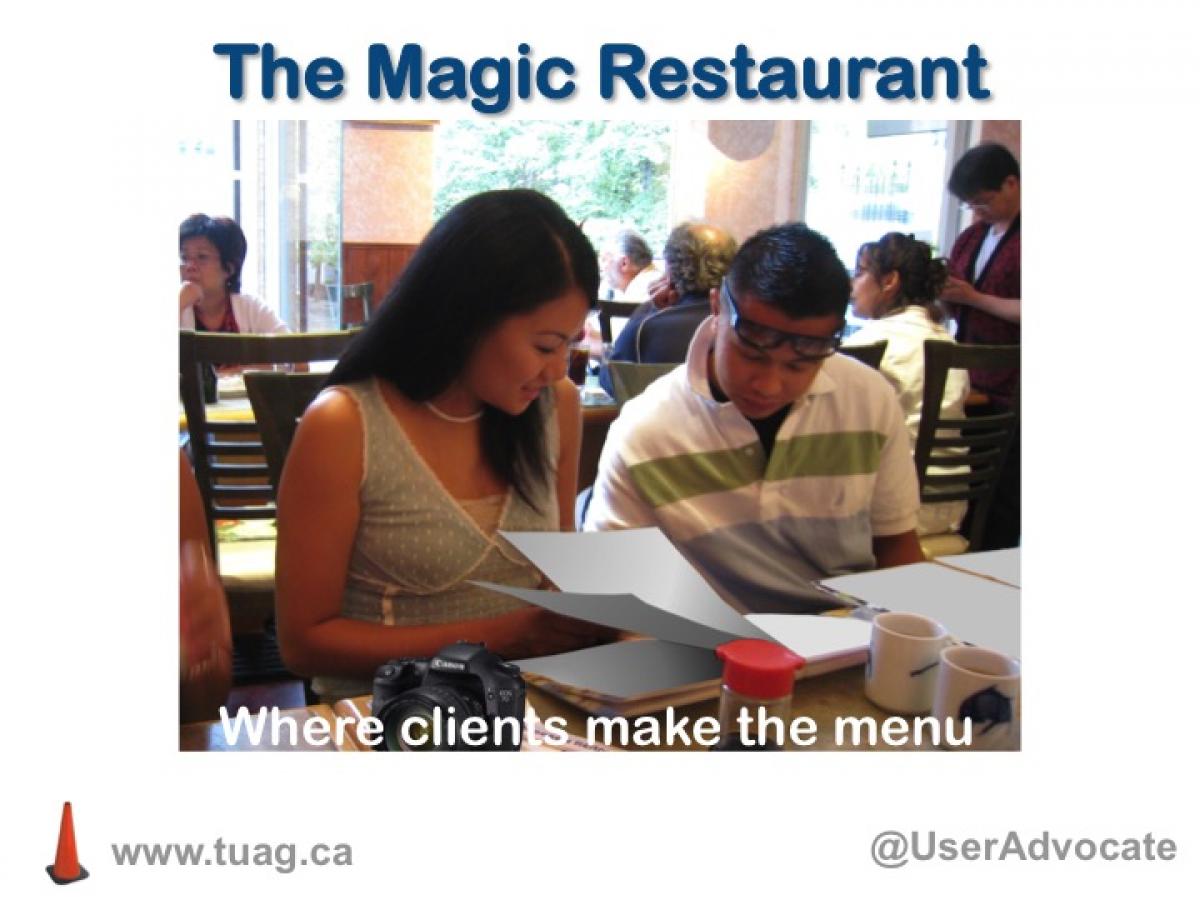The UX of an Inductive Pull Model
Before we can envision a better user interface for any application we need a strong UX strategy. That UX strategy has to be based on a solid understanding of the problems we're trying to solve and a clear picture of the personas and roles of the expected users.
For a website creation platform such as Drupal, there are two significantly different dimensions of the problem that should be factored in: one is the CMS toolset used to build the website; and the second is the website seen by the end user. Designing for Drupal as a CMS/sitebuilding tool and a specific instance of Drupal as an operating website are two entirely different problems to solve and require significantly different UX strategies.
I'm concerned with improving the UX of Drupal as a website building tool. My primary focus here has been to imagine a better UX for website builders. My UX strategy for tackling this problem is influenced heavily by a particular scenario: the dialog between the sitebuilder/designer and their client, the 'website owner'.
My aim is to envision a Drupal sitebuilder interface that flows in a natural manner for this very scenario. How well can the system help the sitebuilder capture the intent of the business owner and ensure that what gets produced in the end is what the site owner expects?
I do some of that envisioning in this video. To make it really clear, I use an analogy of a 'Magic Restaurant' where the menus are blank and the served have not yet arrived.

